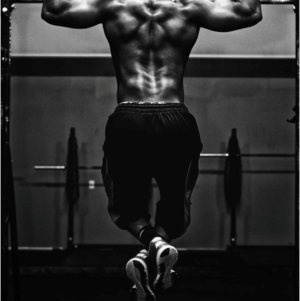Hey there! Let’s delve into the optimal duration of workouts for a natural athlete. Before delving into the specifics of time frames, let’s define a few key aspects. Training Type: Strength training for natural athletes. Strength training for natural athletes is focused on developing strength and increasing muscle mass.
A distinctive feature of such workouts is an emphasis on basic exercises such as squats, pull-ups, bench presses, and many others. Athletes who don’t resort to doping should pay special attention to exercise technique, effective load distribution, and progress control. Training Goal: Focus on increasing strength and muscle mass. The primary goal of strength training for natural athletes is gradual improvement in strength indicators and muscle mass. While goals may vary among different athletes, in this context, our focus is on achieving maximum physical strength and well-defined muscle form.
Strategic Rest: Essential for Achieving Fitness Goals in Strength Training.
Other goals, such as improving endurance or burning fat, may be pursued in addition to the main objective. Rest Between Sets: Warm-up – 1.5-2 minutes, before a working set – 3-4 minutes, during working sets – 5 minutes. Effective time management for rest between sets plays a crucial role in achieving set goals.
Short breaks between warm-up sets contribute to preparing the body for more intense physical activity. A longer rest before a working set provides an opportunity to replenish energy for the successful execution of the next exercise. During working sets, longer breaks are necessary for full regeneration and preparation for the next set.
Exclusion from Workout Duration: Cardio, general warm-ups, jump rope, and similar elements are not included in the main workout duration. Cardio exercises, general warm-ups, and similar elements, while important for overall physical health, are not considered when determining the core duration of strength training. These elements may be included at the beginning and/or end of the workout but do not directly affect the duration of the strength training block. The workout time may vary depending on the chosen type of training:

Tailoring Workouts: Duration Insights for Powerlifting, Full-Body Training, and Minimalist Approaches.
- Powerlifting Schemes: Duration of about 90 minutes, taking into account long rests and low intensity. When using powerlifting schemes, which often include sets with high weight and low repetitions, workouts typically take about 90 minutes. This is explained not only by the training schemes themselves but also by the long breaks between sets. The high intensity of each set requires extended recovery to maintain maximum performance throughout the entire workout. This approach provides optimal conditions for developing strength and muscle mass, as athletes can approach each set with maximum energy and force.
2. Full Body Workout:
Recommended once every 4-5 days, with a duration of up to 2 hours for a more complex impact on the central nervous system (CNS). The full-body workout is more complex and intensive compared to traditional strength training. It is recommended to perform it once every 4-5 days to ensure adequate recovery of the central nervous system (CNS). The duration of such a workout can reach 2 hours due to a greater number of exercises, intensity, and additional activities aimed at developing coordination and overall functionality. This provides a more comprehensive range of physical activity, influencing various aspects of physical fitness and fitness levels.
3. Minimal Duration:
According to the author, the optimal workout can be completed in 15 minutes. This includes at least 1 basic movement with a failure set. The author emphasizes that even within extremely limited time frames, such as just 15 minutes, an effective workout can be conducted.
It is crucial to include at least one basic exercise with a failure set, creating a strong stimulus for strength and muscle mass growth. Although this method may seem highly compressed, it allows athletes to maintain regular workouts even with limited time, which can be particularly useful in the context of a busy schedule or remote access to the gym.

Flexible Workout Routines: Tailoring Training Frequency and Time Frames for Remote Athletes.
For those who, due to various circumstances, cannot regularly attend the gym, there is a recommendation to conduct workouts 2-3 times a week. This proposal not only influences the distribution of time frames for workouts but also significantly impacts the structure of the training process. In this context, for two workouts a week, the standard workout time can be around 1 hour, while for three workouts a week, this time is reduced to 45-50 minutes.
The author shares his experience of conducting workouts, limiting them to two sessions a week, with each workout taking approximately 70 minutes. However, he emphasizes that these time frames are variable and depend on the level of experience and individual characteristics of each athlete. Thus, the optimal duration of workouts may vary depending on the physical preparedness and goals of each individual.

It is essential to underline that achieving outstanding results in strength and muscle growth is closely linked to systematically increasing weight loads and regularly performing exercises. This approach ensures the continual triggering of organism adaptations, contributing to effective physical development and the attainment of set sports goals.


